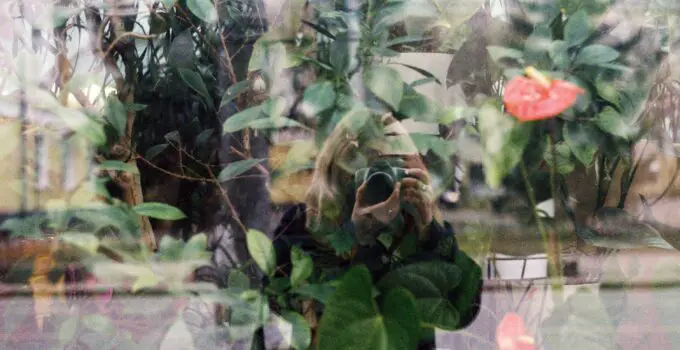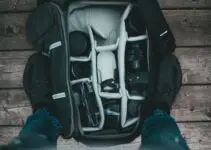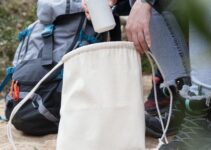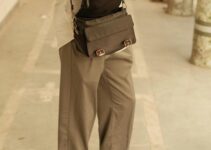Ever wondered how to safeguard your camera gear from the sneaky effects of moisture?
Picture this: you’re on a photography expedition, and suddenly your lens fogs up. Frustrating, right?
What can you toss into your camera bag to battle this moisture menace? Let’s explore the essential arsenal to keep your equipment crystal clear.
Here how to store camera lens in bag?
What can be placed in a camera bag to help reduce moisture?
To minimize moisture in a camera bag, consider adding silica gel packets, which absorb excess humidity.
Silica gel helps prevent condensation on camera equipment, protecting sensitive electronics and lenses from potential damage.
Additionally, storing the bag in a cool, dry place and using moisture-absorbing pouches, like desiccant packs, can further mitigate moisture buildup.
Employing airtight plastic bags or rain covers for added protection against external elements is also beneficial.
Regularly inspect and replace moisture-absorbing materials to ensure their effectiveness in maintaining a dry environment for your camera gear.
Is a camera bag enough to avoid condensation?
While a camera bag provides some protection against condensation, it may not be sufficient in all conditions. Condensation occurs when warm air meets a cold surface, leading to moisture accumulation.
To enhance protection, include moisture-absorbing agents like silica gel in the bag.

Furthermore, allow the camera to acclimate to temperature changes gradually, minimizing sudden shifts that can cause condensation.
Consider using airtight bags or rain covers in wet environments.
Ultimately, while a camera bag offers a level of defense, incorporating additional measures and mindful handling in diverse conditions helps ensure optimal protection against condensation.
Here how to make a fanny pack camera bag?
5 Ways to Protect Your Camera in High Humidity Conditions
1. Acclimate Your Camera
Before exposing your camera to high humidity, allow it to adjust gradually by keeping it in its bag for some time.
This minimizes the risk of condensation forming on sensitive components when transitioning from a cooler environment to a humid one, safeguarding your camera against potential moisture damage.
2. Silica Gel Packs
Include silica gel packs in your camera bag to absorb excess moisture and prevent condensation.
These desiccants help maintain a dry environment around your camera equipment, reducing the risk of humidity-related issues.
Regularly replace or recharge the silica gel to ensure continued effectiveness in high humidity conditions.
3. Keep a Lens Cloth With You
In high humidity, lenses are prone to fogging and moisture accumulation.
Carry a lens cloth to wipe away any condensation or water droplets, ensuring clear and sharp shots.
Regularly clean both the front and rear elements of your lenses to maintain optimal image quality in challenging humidity conditions.
Here can you wash a camera bag?
4. Dry Your Equipment
After use in high humidity, thoroughly dry your camera and accessories before storing them.
Use a soft, absorbent cloth to remove any moisture, paying attention to crevices and joints.
This simple yet crucial step helps prevent long-term damage caused by prolonged exposure to humidity, ensuring your gear stays in top condition.
5. Avoid Changing Lenses
Minimize exposing your camera’s interior to humid air by avoiding unnecessary lens changes in high humidity conditions.
Each lens change increases the risk of moisture entering the camera body.

If lens changes are unavoidable, try to do so in a drier environment to reduce the potential impact of humidity on your equipment.
How To Use Silica Gel In Camera Bag ?
1、 Absorbing Moisture: Preventing condensation and humidity damage in camera bags.
Place silica gel packets strategically within your camera bag to absorb excess moisture and prevent condensation.
Silica gel is a desiccant that actively pulls in and retains humidity, maintaining a dry environment for your camera gear.
Ensure the silica gel packets are clean and dry initially, and monitor them regularly.
Replace or recharge the silica gel as needed to sustain its moisture-absorbing capabilities and safeguard your equipment from the adverse effects of humidity.
Here what are the hacks to pack a camera bag while travelling?
2、 Protecting Equipment: Using silica gel to safeguard cameras and lenses.
Position silica gel packets strategically around your camera and lenses within the bag to create a protective barrier against humidity.
The silica gel actively works to absorb and minimize moisture, preventing potential damage to sensitive camera equipment.
Ensure each piece of gear is surrounded by the moisture-absorbing properties of silica gel, mitigating the risk of condensation and preserving the optimal functioning of your valuable photography equipment in varying environmental conditions.
Regularly check and replace silica gel for continued effectiveness.
3、 Placement Tips: Where to position silica gel packets in camera bags.
Distribute silica gel packets evenly throughout the camera bag, focusing on areas where moisture is likely to accumulate.
Ensure the packets are not in direct contact with the camera or lenses to prevent any potential abrasion.
Placing them in pockets or compartments near the top and sides of the bag maximizes their effectiveness.
This strategic placement helps create a uniform, dry environment, enhancing the overall protection of your camera gear against the damaging effects of humidity and condensation.
4、 Recharging Silica Gel: Refreshing and reusing silica gel for optimal performance.
To maintain optimal performance, periodically recharge silica gel packets. Place them in a dry, well-ventilated area or an oven at a low temperature, following manufacturer guidelines.

This process removes absorbed moisture, renewing the silica gel’s moisture-absorbing capacity.
Regularly check the color indicator (usually blue to pink) on the gel packets – a sign of saturation.
Recharging ensures continued effectiveness in protecting your camera gear from humidity-induced damage.
Here what are camera bag used for?
Related faq’s
Which items should be placed in a travel camera bag?
In a travel camera bag, essentials include a camera body, versatile lens (e.g., 24-70mm), spare batteries, memory cards, lens cleaning kit, compact tripod, camera strap, lens hood, and a durable camera bag for protection.
Consider additional items like a remote shutter release, portable charger, and lens filters for diverse shooting conditions.
Which activity is important for protecting camera equipment in high humidity?
To protect camera equipment in high humidity, use silica gel packs to absorb moisture inside the camera bag, employ airtight storage containers, and include moisture-absorbing sachets.
Regularly clean and dry the equipment, and use a lens hood to minimize condensation.
Ensure proper ventilation and acclimatize gear to prevent moisture-related damage.
Which item would be best at removing sand from a camera?
A small, soft-bristle brush, like a lens brush or camera cleaning brush, is best for removing sand from a camera.
Gently sweep the brush over the camera body and lens, avoiding abrasive materials that could scratch the surface.
A blower can also be used to remove loose sand particles without direct contact.
Which accessory allows photographers to keep their camera equipment safe from damage while in use?
A camera protective case or camera cage is an accessory that helps photographers keep their camera equipment safe from damage while in use.
These durable cases or cages provide a protective framework around the camera, safeguarding it from impacts, scratches, and potential accidents during various shooting conditions.
Conclusion:
In the world of photography, safeguarding your equipment is crucial.
To combat moisture in your camera bag, consider adding silica gel packs, lens desiccants, and moisture-absorbing pouches.
These simple yet effective solutions ensure your gear stays in top condition, ready for your next captivating shot.
What additional tips do you have for keeping your camera gear moisture-free? Share your insights below and let’s build a community of photography enthusiasts committed to preserving their equipment!







